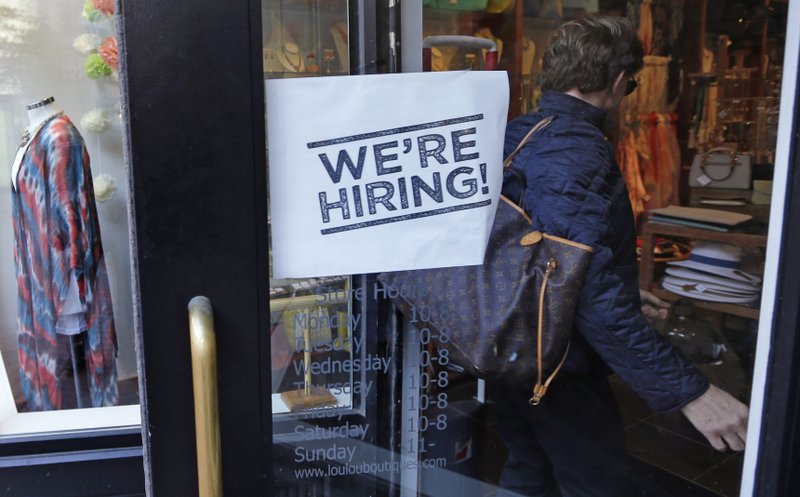WASHINGTON -- Job growth ground nearly to a halt in May, with the U.S. labor market having its worst performance in more than five years, the Labor Department said Friday.
While unemployment slid from 5 percent to 4.7 percent, the lowest level since November 2007, the rate fell for a troubling reason: Nearly a half-million jobless Americans stopped looking for work and so were no longer counted as unemployed.
Employers added just 38,000 jobs in May, the fewest in more than five years.
"Boy, this is ugly," said Diane Swonk, an independent economist in Chicago. "The losses were deeper and more broad-based than we expected."
Less-educated workers bore the brunt of the hiring slump, with a quarter-million high school dropouts losing their jobs in May. That has perpetuated a long-term trend toward a two-tiered job market, with college-educated adults more likely to be employed and earning steady raises.
"The shockingly low payrolls gain in May provides further evidence that the economy is showing clear signs of slowing," said Laura Rosner, an economist at BNP Paribas.
Essentially all of the 7 million jobs added over the past decade belong to workers with at least some college experience. The number of high school graduates with jobs is 3 million lower than 10 years ago.
"The high school jobs are gone and they're not coming back," said Anthony Carnevale, director of the Georgetown University Center on Education and Workforce. "It's driven by a fundamental shift from an industrial economy to a postindustrial economy."
The hiring stall could be temporary, economists noted. There have been hiring lulls before in the seven-year recovery.
But job gains in March and April were also revised downward on Friday, leaving average monthly hiring at a pace of just 116,000 in the past three months. That's sharply below last year's average of nearly 230,000.
The share of Americans who are working or searching for jobs -- a figure known as the labor force participation rate -- fell in May to 62.6 percent, near a four-decade low.
The May job gain was lowered by the Verizon workers' strike, which depressed hiring in the telecom sector by 37,000.
In addition, manufacturers, construction companies and temporary help agencies all shed jobs. Retailers, hotels and restaurants added jobs, but at a slower pace than in recent months.
Employers probably cut back on hiring after the economy grew at just a 0.8 percent annual rate in the January-March quarter.
Friday's dismal jobs report was a surprise, in part because most recent economic reports have been encouraging: Consumer spending surged in April. Home sales and construction have also increased. Sales of new homes reached an eight-year high in April.
Most economists expect growth will rebound in the April-June quarter to about a 2.5 percent annual pace.
One bright spot was that wages continued to show solid improvement. Average hourly earnings increased 5 cents in May to $25.59, although that was less than the 9-cent increase the previous month.
For the 12 months ending May 31, average hourly earnings increased 2.5 percent.
"To be clear, there is no evidence the economy is slowing into recession," said Steve Blitz, chief economist of M Science, a research firm.
Some economists said the huge decline in job creation makes it unlikely Federal Reserve policymakers will increase a key interest rate when they meet to assess the state of the economy later this month.
"Going into the payroll number, it was clear that unless the jobs report was horrible the Fed was going to hike in either June or July," said Steve Ricchiuto, chief economist at Mizuho Securities. "This now assures that June is off the table but may not rule out July."
In a speech Friday, Fed Gov. Lael Brainard said the figures "suggest that the labor market has slowed." Policymakers should be in no hurry to raise given still-low inflation, the possibility that the U.K. votes to leave the European Union later this month and concern about growth in China, she said.
"Recognizing the data we have on hand for the second quarter is quite mixed and still limited, and there is important near-term uncertainty, there would appear to be an advantage to waiting until developments provide greater confidence," Brainard said.
Information for this article was contributed by Jim Puzzzanghera of the Los Angeles Times; by Christopher S. Rugaber and Josh Boak of The Associated Press; by Rich Miller and Shobhana Chandra of Bloomberg News; and by Patricia Cohen and Binyamin Appelbaum of The New York Times.
Business on 06/04/2016
